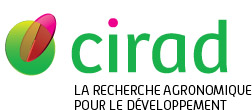Rakotondramanana Mbolatantely, Stangoulis James, Grenier Cécile, Wissuwa Matthias. 2025. The contribution of Zn uptake and grain Zn loading intensity to achieving Zn biofortification breeding targets in rice. Journal of Plant Nutrition and Soil Science, 11 p.
|
Version publiée
- Anglais
Sous licence  . .
Rakotondramanana et al. - 2025 - The Contribution of Zn Uptake and Grain Zn Loading Intensity to Achieving Zn Biofortification Breedi.pdf Télécharger (1MB) | Prévisualisation |
Résumé : Background: Increasing Zinc (Zn) concentrations in rice grains is targeted in Zn-biofortification breeding but most rice varieties have grain Zn concentrations far below breeding targets. Aims: High-Zn donors have been identified and our aim is to investigate whether higher grain Zn concentrations in these donors were the result of superior Zn uptake during the reproductive stage, of higher Zn loading intensities or caused by an extended Zn loading period. Methods: Field experiments comparing two high-Zn donors to two low-Zn modern varieties were conducted over two seasons in Madagascar and tissue Zn concentrations and content determined from heading to maturity. Results: Zn uptake between heading and maturity was not limiting grain Zn concentrations. Neither did studied genotypes differ significantly in the duration of Zn loading, which peaked 8–12 days after flowering and strongly decreased thereafter, even in high-Zn donors. Instead, the Zn loading intensity during grain filling differed with peak loading rates exceeding 60 ng Zn day−1 in high-Zn donors compared to 13–37 ng Zn day−1 in low-Zn varieties. This high Zn loading intensity was further evident when Zn and biomass grain loading rates were compared. Donor IRIS-9368 loaded up to 40 ng Zn mg−1 grain biomass compared to 12–21 ng Zn mg−1 in low-Zn varieties. This high loading intensity resulted in a zinc harvest index of 47.7% in IRIS-9368 compared to 26.1% for local variety X265 despite similar reproductive-stage Zn uptake. Conclusions: We hypothesize that xylem-to-phloem transfer of Zn at upper nodes is more efficient in high-Zn donor IRIS-9368.
Mots-clés Agrovoc : génotype, amélioration des plantes, Oryza sativa, variété, grain, zinc, fertilisation, légume racine, essai de variété, biomasse, expression des gènes, riz
Mots-clés géographiques Agrovoc : Madagascar
Mots-clés libres : Gene-bank accessions, Genotypic variation, Grain zinc, Zinc concentrations, Zinc translocation
Agences de financement hors UE : Consortium of International Agricultural Research Centers, Deutsche Forschungsgemeinschaft
Auteurs et affiliations
- Rakotondramanana Mbolatantely, FOFIFA (MDG)
- Stangoulis James, Flinders University (AUS)
-
Grenier Cécile, CIRAD-BIOS-UMR AGAP (FRA)
 ORCID: 0000-0001-5390-8344
ORCID: 0000-0001-5390-8344
- Wissuwa Matthias, JIRCAS (JPN) - auteur correspondant
Source : Cirad-Agritrop (https://agritrop.cirad.fr/613112/)
[ Page générée et mise en cache le 2025-05-06 ]




